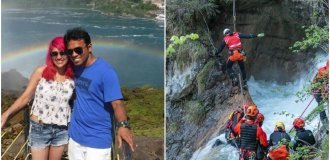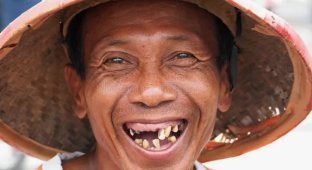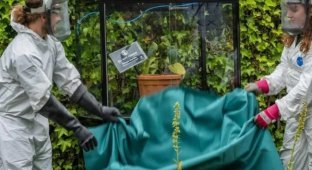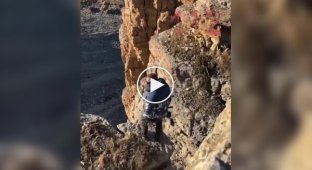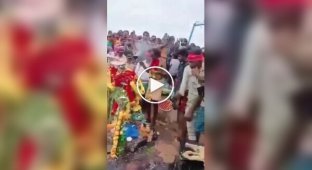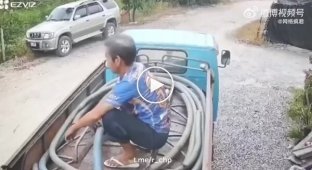People from a tribe with no contact with civilization were caught on camera in Brazil (10 photos)
The tribe members are categorically unwilling to communicate with other people and desperately protect their borders. 
In the Brazilian state of Rondonia, a camera captured people from a wild tribe living in a tropical forest. This tribe was first discovered in the early nineties. It is unknown what these people call themselves, but scientists have named them Massaco after the river that flows through their lands near the border of Brazil and Bolivia. 
The Massaco are one of 28 isolated tribes that live in the Amazon jungle and have no contact with civilization. The people of this community know how to hunt with long bows and protect their lands from intruders with traps made of hidden spikes. The spikes are made from hardwoods. They are so strong that they can pierce a tractor tire. In order to study the isolated tribe without making contact with them, scientist Allgeier installed cameras in the Amazon forests and periodically shares photos of the Massaco representatives. 
Allgeier began researching the Massaco in 1992. Thanks to his efforts, the jungle in the tribe's habitat has stopped being cut down, leaving the community with their land. 
Because early experience of contact with isolated tribes turned out to be sad for wild people (the number of communities was greatly reduced due to diseases), Allgeier decided to conduct remote observation of the Massaco, although initially there were attempts to get to know people closer. Anthropologists left them tools (axes, knives), some household utensils, but the Massaco, despite the offerings, did not make contact and, going into the forest, left sharp thorns behind them so that scientists could not follow them.
Since the attempts at contact ceased, and logging was reduced to zero, the number of the tribe increased. According to Allgeier, in the early 90s about 90-100 people lived here. Now, according to his estimates, there are 50 families here, each of which has four to five people, that is, the total number of Massaco is 200-250 people. 
These are temporary dwellings that the Massaco use in the territory where they hunt and gather fruits en masse
A team of researchers has compiled maps of 174 tapirs (temporary dwellings of the Massaco), the trails that the tribe uses to move, and photographed thousands of artifacts. Scientists have learned that the Massaco burn areas of natural savannah at the beginning of the rainy season, and then move there when young shoots appear there. 
The long, two-meter hammocks can sleep two people at a time
“By finding the ‘hot spots’ recorded on satellite images in July and August, we know in advance where they will settle for the next rainy season, from December to April,” says Allgeier.
At abandoned sites, scientists are finding bows and arrows – they can reach three meters in length and are among the longest ever found in the Amazon. 
"We have no idea how they shoot a bow. Other indigenous peoples try to figure it out, laugh and say it's impossible. Maybe it's done lying down, but to this day we don't have an answer to this riddle," says Allgeier.
Anthropologists note that the Massaco differ from neighboring peoples not only in their long bows, but also in their tall tapirs, their use of spikes, and the placement of animal skulls on poles. The men of the tribe wear their hair long, but they have no piercings or body art. 
The tribe's language is also unique - in any case, an Indian who knows the languages of several tribes, upon hearing Massaco, did not understand a word. Perhaps this tribe came from Bolivia, but this is only an assumption, not yet confirmed. 
In a photo taken in the forest, the researcher identified the leader of the tribe - he is holding a large long stick, with which he shows the place where the spikes are to be installed. The rest of the tribe digs the earth to place the spikes in the holes. 
The increase in the tribe's numbers is a welcome development, however, anthropologists believe that the Massaco will need new territories, which means that the risk of their contact with other tribes or civilization cannot be ruled out. The latter, as a rule, ends extremely badly for wild people.



